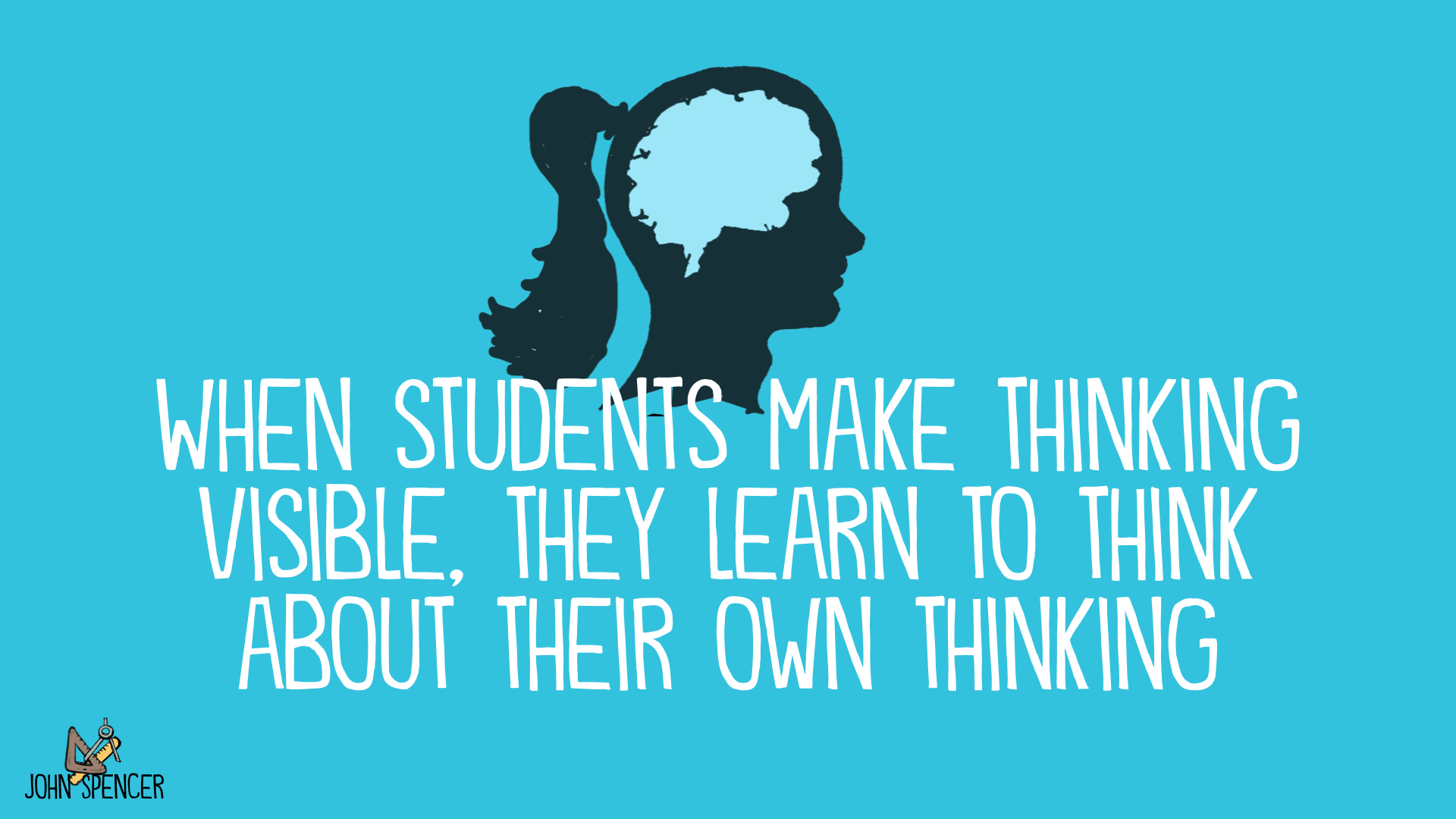
Nowadays, teachers face the enormous burden of students thinking that their responsibility is to say the correct answer and what the teacher ”wants to hear”. How can educators switch this frame of thought into one where students are comfortable expressing what they are actually thinking?

What is MTV and Why Should Educators Use It?
Making Thinking Visible, or MTV, is a pedagogical approach encouraging students to express their thought processes in order to unlock deeper understanding through the uncovering of their ideas both to themselves and their teachers. MTV, if utilized in classrooms, can be a powerful approach to truly engage students. Through MTV routines, students become participants in the learning process, increasing their engagement as learning becomes more student-oriented rather than teacher oriented. By giving them more active roles in the classroom, students are actually invested and are participants throughout the learning process as it naturally turns over to them.
One of the greatest strengths of MTV comes from its ability to serve as formative assessments in the classroom. As a teacher, our main priority is always to be assessing and making sure our students are progressing in their course of knowledge, and sometimes it can be very difficult to gauge how much they are actually comprehending and retaining. Thinking routines provide teachers with invaluable information about how students are progressing and processing which can be utilized to plan the next steps for each student individually. It also gives teachers instant feedback from students, making it a quick process to engage in responsive instruction. This blog post details a variety of MTV routines that would be beneficial for any classroom!
MTV is also powerful in the sense that teachers can benefit just as much as their students. MTV allows teachers to observe and see the learning and thinking the students’ possess, instead of basing their intellect on just test scores. Teachers come to know their students more personally and see how they are understanding what is being taught.

MTV in Practice
As I am not currently in the classroom, I considered how to implement MTV strategies in unit plans for the future, including the unit I am planning for this course. It is primarily ELA based however will definitely encompass some Social Studies as students dive into the historical contexts of the literature included on the topics of prejudice, identity, and race. I am planning on including a lot of student-led discussion, and as such, I really liked the idea of using the “Question Sorts” technique so that students know what kinds of questions will lead to the most productive and meaningful conversations. To generate purposeful and important discussion, students should learn this skill, and I hope to supplement this and add to this strategy by incorporating facilitative questions.
Since my unit focuses on heavy topics that stem from generational issues and beliefs, I think the “Peeling the Fruit” routine would also be very helpful to keep in mind during the unit. I want to include either an interactive notebook or worksheets to be used throughout the unit, and so this evolving document would be helpful in aiding students during their exploration and understanding of topics covered throughout the entire unit. I’d also love to use MTV in combination with digital features, bringing a technological aspect to the unit and read this enlightening blog post featuring digital tools that can showcase student thinking!
TCE Thresholds and Connections to MTV
- Both teachers and students have empowerment/agency
- Through MTV routines students are encouraged to share their thoughts and opinions constantly, showing them that they have power and knowledge that is important, not just the teacher.
- Students naturally take agency over their learning through empowerment of teachers instead of thinking of the classroom as a dictatorship.
- Both teachers and students hold the ability to ask questions and generate discussions that are relevant and empower them.
- Curriculum is co-constructed
- MTV highlights making students active participants in learning rather than a teacher-centered classroom.
- Involves students bringing in their own thoughts and experiences to the learning.
- Students help construct the curriculum alongside the facilitation and guidance of the teacher.

I love the idea of an evolving document especially for a social studies class! As a social studies teacher, I can think of having students create a Quantum Leap situation where they have to live out each time period. I think by having the students put their mindset in that situation, with added imagination, it could be very interesting to see how each story plays out. I hope this helps with your future class and ideas!
Hi,
I enjoyed the video you linked to “Making Thinking Visible.” It provided valuable insights into enhancing learning and comprehension through visible thinking strategies. The “Peeling the Fruit” routine particularly stood out to me.
I believe that “Peeling the Fruit” could be incredibly beneficial for long-term projects. By using this routine, learners can visually track their progress and understanding over time, making their thinking process more transparent and reflective. This can be especially powerful in a project-based learning environment. It can also serve as a great tool for collaborative reflection, motivating team members to discuss and analyze their thought processes – Having a notebook is a great idea with this strategy!
Thank you for your feedback! I agree, I think with PBL it could extremely beneficial. Especially combined with a notebook, students can track all of their brainstorming, progress, outcomes and revisions. Thanks again!